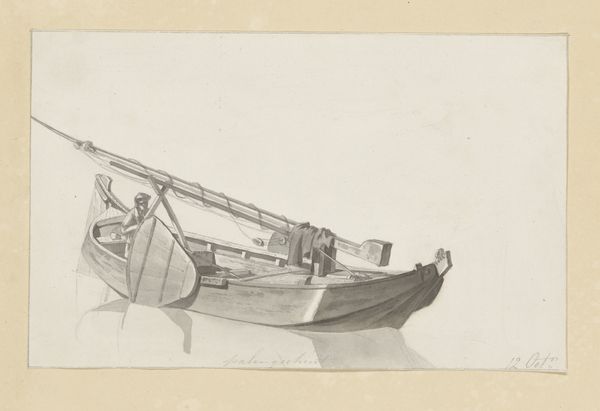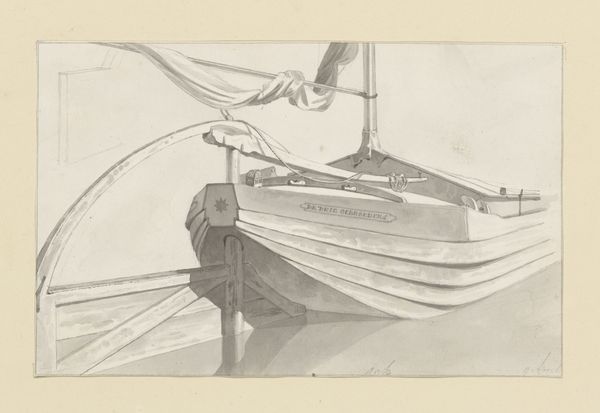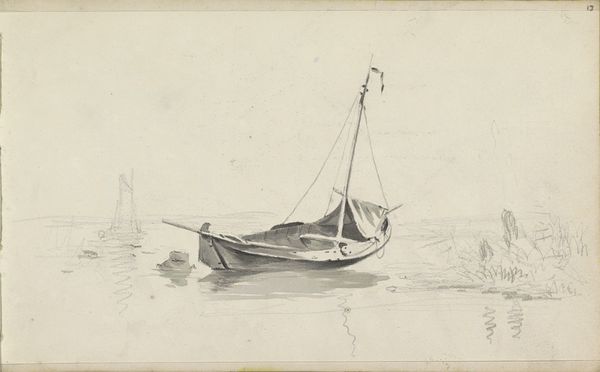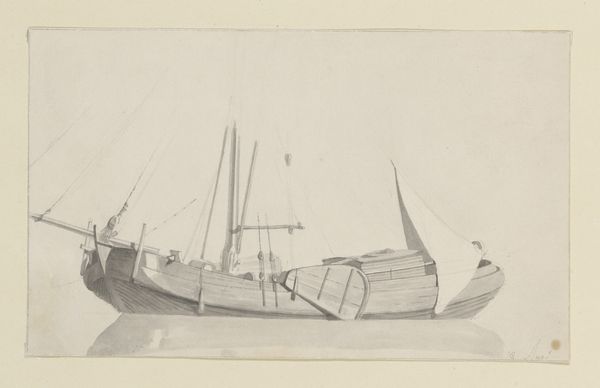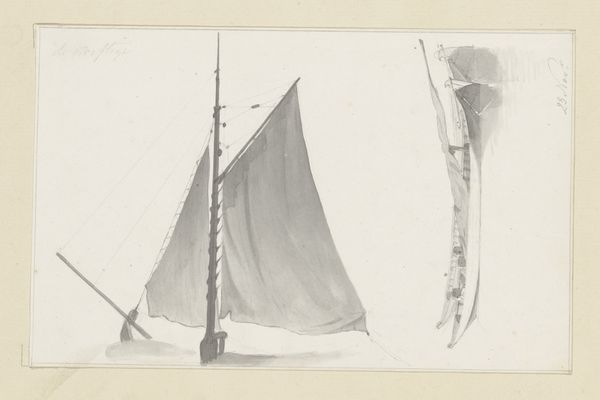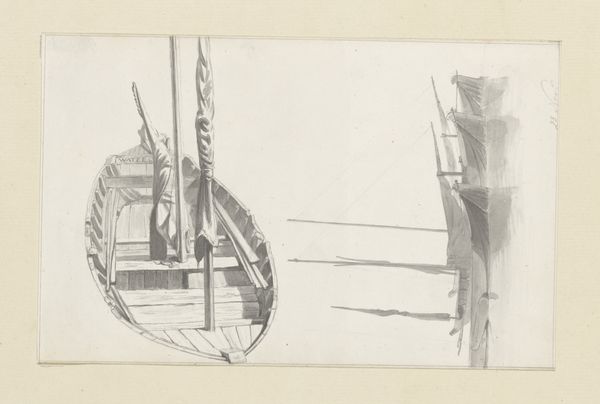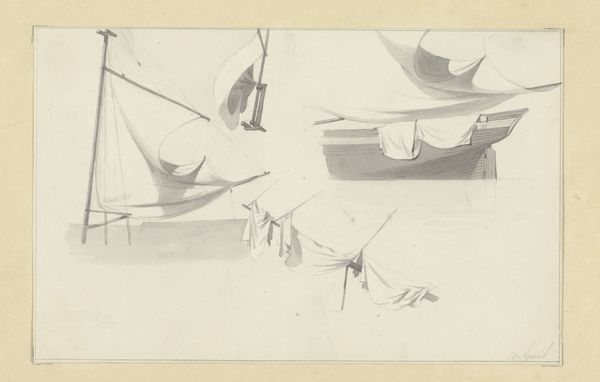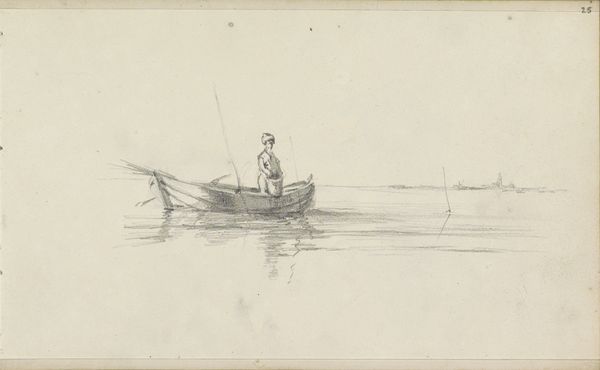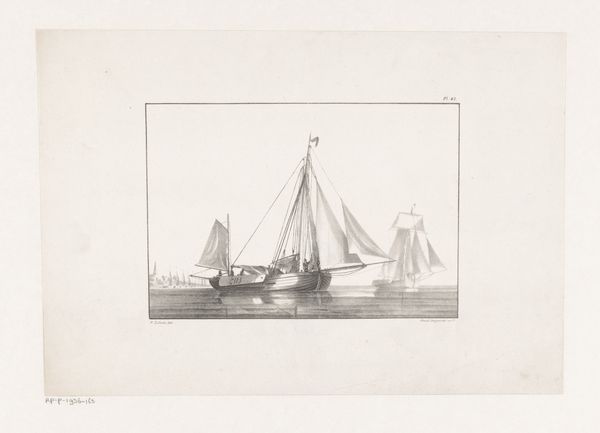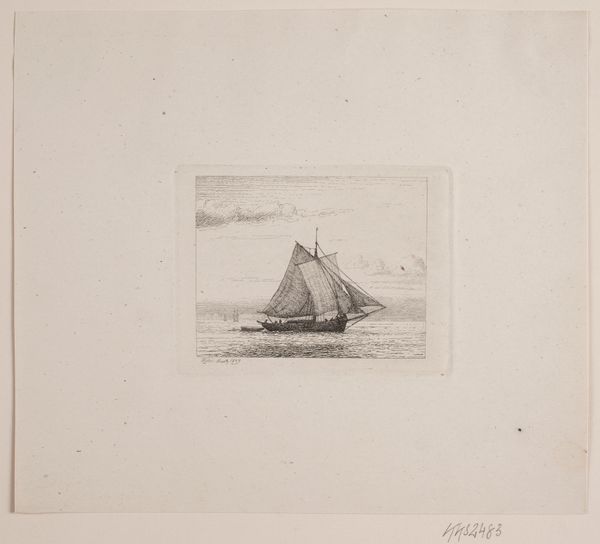
drawing, paper, pencil
#
drawing
#
light pencil work
#
landscape
#
paper
#
pencil
#
pencil work
#
genre-painting
#
realism
Dimensions: height 121 mm, width 193 mm
Copyright: Rijks Museum: Open Domain
Curator: Here we have Hendrik Abraham Klinkhamer’s “Palingschuit,” dating roughly from 1820 to 1872. It’s a pencil drawing on paper. Editor: It’s very delicate. Almost ethereal. The subdued palette creates a real sense of tranquility; it feels like a stolen moment. The figure in the boat is dwarfed by the sky and water, yet it holds such attention to details. Curator: It’s interesting to see Klinkhamer turning his attention to such genre scenes. Often, the tendency is to portray such subjects through romantic lenses, to almost ennoble those that perform manual labor or engage with nature. It’s really showing an ordinary scene from everyday life in the Netherlands. Editor: I appreciate that realism—it resists idealizing labour, focusing instead on the quietude, maybe even the loneliness, inherent in such work. The drawing almost feels like an invitation to consider how societal structures and gender roles affect even this seemingly peaceful scene. Who gets to experience leisure and who is tasked with labor, and who does this affect in those spaces? Curator: The choice of medium, pencil on paper, also plays a role. The artist wasn’t interested in using oil on canvas to portray a simple fishing boat. These smaller pencil drawings offered a different kind of engagement. You could almost say a democratic mode for distributing art, breaking away from the formal salons. Editor: Absolutely. This work bypasses those systems. It quietly makes us look, and ask questions. Also, note how the composition focuses on the rower rather than emphasizing the size and scale of the vessel itself, centering labor as part of this person's experience rather than an afterthought. It humanizes it in a profound way. Curator: The Rijksmuseum is incredibly lucky to have pieces like this which contextualizes work through lenses. It asks audiences to look closely at our collection’s breadth of Dutch art. Editor: I agree. It really reveals how deeply entangled labor and identity can be in shaping a narrative. Hopefully visitors feel the same invitation.
Comments
No comments
Be the first to comment and join the conversation on the ultimate creative platform.
